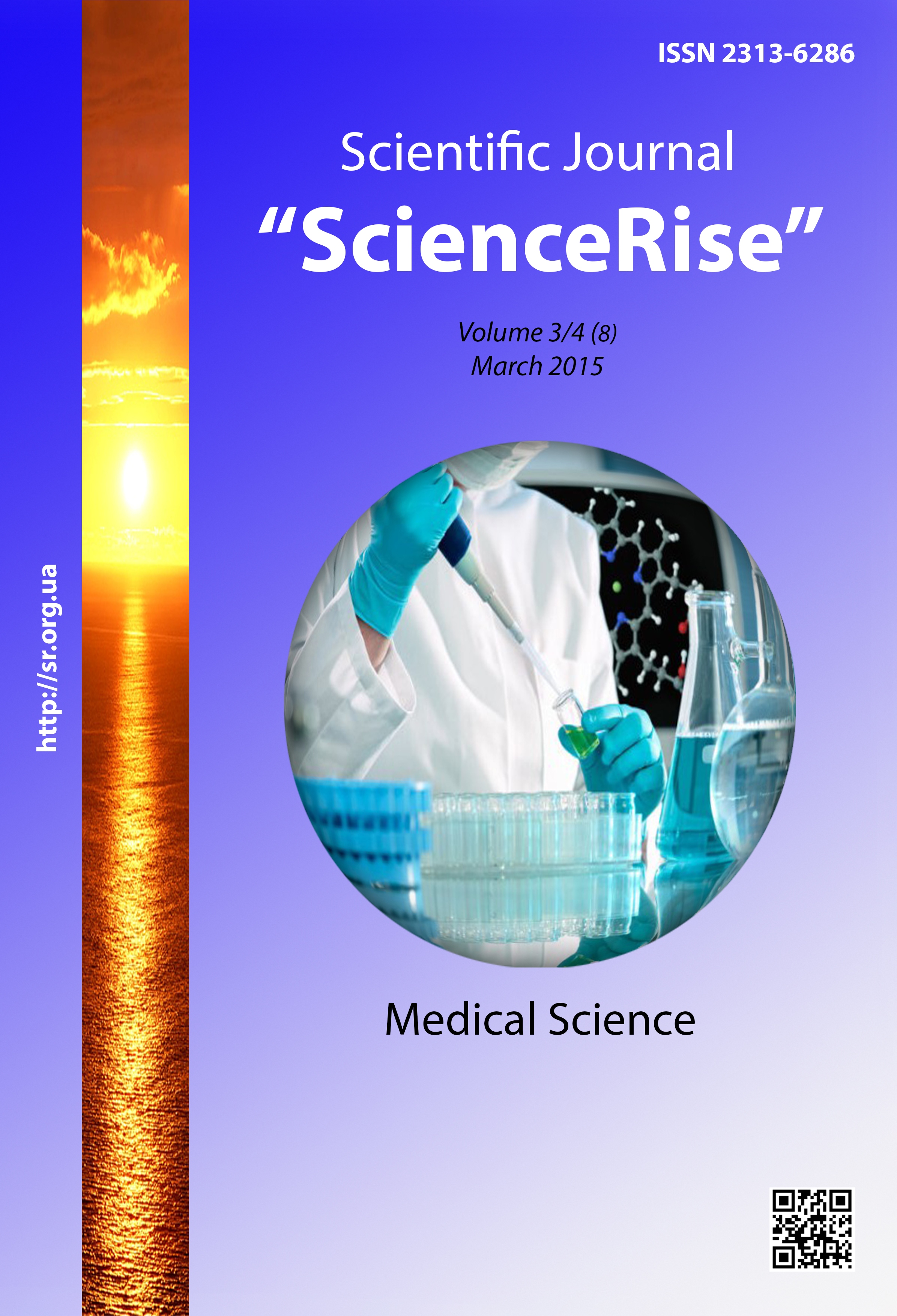Radiological features of pneumonia in children with hypoxic-ischemic and traumatic CNS injuries
DOI:
https://doi.org/10.15587/2313-8416.2015.39301Keywords:
pneumonia, chest X-ray, children with hypoxic-ischemic and traumatic lesions of the central nervous systemAbstract
The most common complication of lung disease in children with hypoxic-ischemic and traumatic lesions of the central nervous system is pneumonia.
Methods. To clarify radiological features of pneumonia in children with hypoxic-ischemic and traumatic lesions of the central nervous system (CNS) were studied chest X-ray (CXR) of 127 children (71 boys and 56 girls) with a diagnosis of hypoxic-ischemic and traumatic CNS lesion.
Results. In the examined patients usually observed focal (63,8±3,5 %) and segmental pneumonia (36,8±4,4 %), that has its characteristic features on chest X-rays. Premature infants with hypoxic-ischemic lesions of the central nervous system has higher frequency of pneumonia (61,4 5,9 %) then term children’s with traumatic lesions of the central nervous system – 38,6±4,5 % of cases.
Conclusions. X-ray method of research is leading in diagnostics of pneumonia in children with hypoxic-ischemic and traumatic CNS lesion. It allows to establishing the nature of the pathological process, its features, degree distribution and dynamics and effectiveness of the treatment. In premature infants dominated focal pneumonia, in term children – segmental. Development of segmental pneumonia on the background of aspiration syndrome is more characteristic for mature infants
References
Shadlun, D. R., Romanenko, T. G., Glazkov, I. S. (2000). Osoblyvosti rann'oi' neonatal'noi' smertnosti na suchasnomu etapi. Pediatrija, akusherstvo ta ginekologija, 2,76–77.
Moshhych, P. S., Sulim, O. G. (Eds.) (2004). Neonatologija. Kyiv «Vyshha shkola», 271–275.
Volodin, N. N., Bajbarina, E. N., Buslaeva, G. N., Degtjarev, D. N. (2007). Neonatologija. Moscow: «GJeOTAR-Media», 287–292.
Shabalov, N. P. (2004). Neonatologija. Medpress, 1, 530–533.
Dement'eva, G. M. (2002). Pul'monologicheskie problemy v neonatologii. Pul'monologija, 1, 37–39.
Arjaev, N. L. (2005). Detskaja pul'monologija. Kiev: «Zdorov’ja», 605.
Agrons, G. A., Courtney, S. E., Stocker, J. T., Markowitz, R. I. (2005). Lung Disease in Premature Neonates: Radiologic-Pathologic Correlation1. RadioGraphics, 25 (4), 1047–1073. doi: 10.1148/rg.254055019
Kramnyj, I. O., Voron'zhev, I. O., Grebenjuk, V. Ju. (2001). Osoblyvosti zmin rentgenologichnoi' kartyny v legenjah u novonarodzhenyh z gipoksychno-ishemichnym urazhennjam central'noi' nervovoi' systemy. Ukrai'ns'kyj radiologichnyj zhurnal, 1, 31–33.
Voron'zhev, I. O., Spuzjak, M. I., Kramnyj, I. O. (2012). Rentgenodiagnostyka stupenja tjazhkosti aspiracijnogo syndromu u novonarodzhenyh z perynatal'nymy urazhennjamy CNS. Promeneva diagnostyka, promeneva terapija, 1, 43–45.
Spuzjak, M. I., Kramnyj, I. O., Voron'zhev, I. O. et. al. (2009). Rentgenodiagnostyka zahvorjuvan' organiv dyhannja u novonarodzhenyh. Radiologichnyj visnyk, 3 (32), 18–29.
Spuzjak, M. I., Kramnyj, I. O., Sharmazanova, O. P.; Spuzjak, M. I., Kramniy, I. O. (Eds.) (2013). Pediatrychna rentgenologija: keryvnyctvo. Vol. 1. Kharkiv: Cyfrova drukarnja № 1, 73–116.
Downloads
Published
Issue
Section
License
Copyright (c) 2015 Ігор Олександрович Вороньжев

This work is licensed under a Creative Commons Attribution 4.0 International License.
Our journal abides by the Creative Commons CC BY copyright rights and permissions for open access journals.
Authors, who are published in this journal, agree to the following conditions:
1. The authors reserve the right to authorship of the work and pass the first publication right of this work to the journal under the terms of a Creative Commons CC BY, which allows others to freely distribute the published research with the obligatory reference to the authors of the original work and the first publication of the work in this journal.
2. The authors have the right to conclude separate supplement agreements that relate to non-exclusive work distribution in the form in which it has been published by the journal (for example, to upload the work to the online storage of the journal or publish it as part of a monograph), provided that the reference to the first publication of the work in this journal is included.

